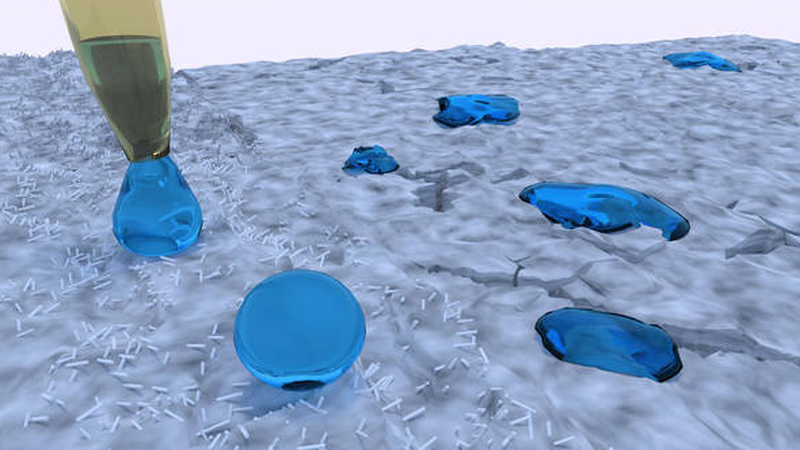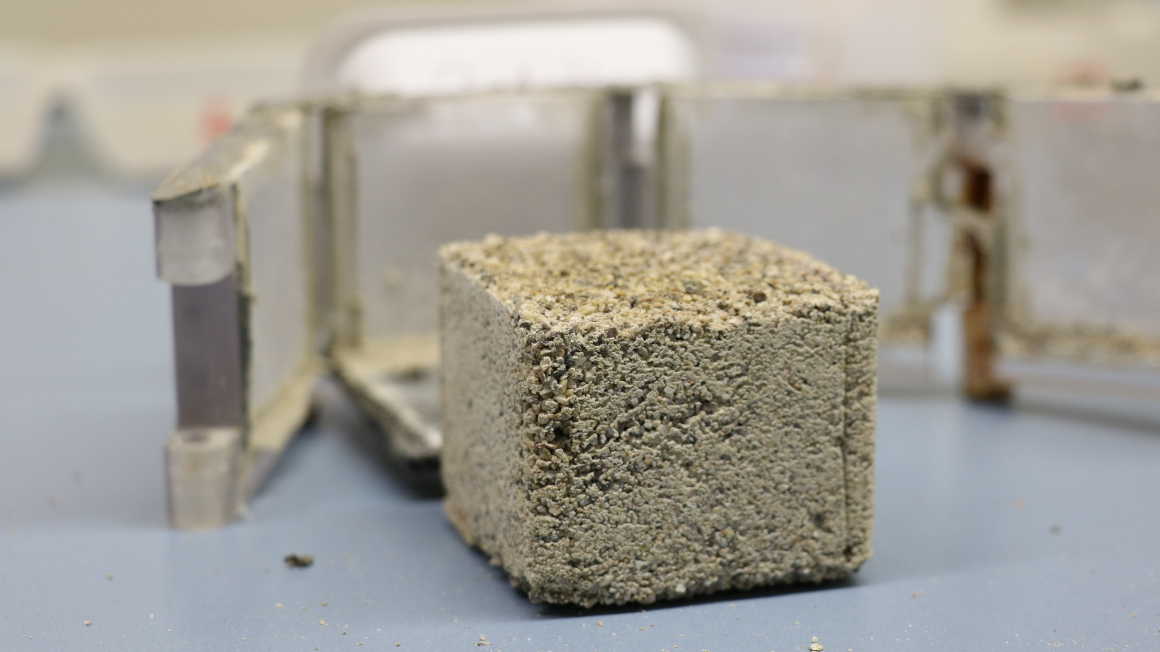Water-resistant mortar thanks to a biofilm
Buildings are built to last, at least that is the intention. Over time, however, moisture can destroy the mortar that binds together bricks or stones, for example, when cracks from as a result of frost.

A team of scientists from the Technical University of Munich (TUM) have discovered an unusual way to protect mortar from moisture. When mortar is being mixed, the scientists add a biofilm – a soft, moist substance produced by bacteria, which makes it highly resistant to water absorption. This enables the concrete to self-heal by closing the cracks autonomously.
Oliver Lieleg, a professor of biomechanics at the Institute of Medical Engineering (IMETUM) mainly works with biopolymer-based hydrogels, or put simply, the slim formed by living organisms. These included bacterial biofilms, such as dental plaque and the slimy black coating that forms on the inside of sewage pipes. “Biofilms are generally considered undesirable and harmful. They are something you want to get rid of,” says Oliver Lieleg. “I was therefore excited to find a beneficial use for them.”
Conversation invokes inspiration
It was during a conversation with a colleague at TUM that Lieleg came up with the idea of using biofilms to alter the properties of construction materials. TUM professor Christian Große investigates self-healing concrete whose cracks close autonomously. One variant of this concrete contains added bacteria. Activated by the ingress of water, the bacteria close the cracks in the concrete with metabolic products containing calcium. Lieleg chose to use mortar instead of concrete for his own project. Instead of mending cracks after damage has occurred, his aim is to prevent moisture from penetrating into mortar in the first place. Invading water can lead to serious problems, for example by inducing the growth of mould or widening existing microcracks through freeze-thaw-cycles. To prevent such water ingress, Lieleg takes the advantage of the fact that some bacterial films are highly water-repellent.
A soil bacterium produces the bio-supplement
The key ingredient in the new material is a biofilm produced by the bacterium Bacillus subtilis. “Bacillus subtilis normally lives in soil and is a very common microorganism,” explains Oliver Lieleg. “For our experiments, we used a simple laboratory strain that grows rapidly, forms plenty of biomass and is completely harmless.” Lieleg’s team bred the bacterial film on standard culture in the lab, and then added the moist film to the mortar powder.
Results showed that in the generated hybrid mortar, water was significantly less able to wet the surface compared to untreated mortar. To reach this result, the scientists measured the contact angle between water droplets and the surface. The steeper the angle, the more spherical the drops are, the less likely the liquid is soaked into the material. With untreated mortar, this angle is only 30 degrees or less but three times as high for drops on the hybrid mortar. The contact angle of water drops on the synthetic fluoropolymer polytetrafluoroethylene (PTFE), better known by the trade name “Teflon” have a similarly high contact angle.
The lotus effect
Tiny crystalline spikes cover the surface of the hybrid mortar, explaining its water-repellent properties. This is called the lotus effect, which also occurs on the leaves of the lotus plant. The small spikes on the leaves ensure that only a small part of a water droplet is actually in contact with the leaf surface. Consequently, the droplet easily rolls of the leaf when the leaf is tilted. A cross-section of hybrid mortar shows that crystalline spikes are evenly distributed on the mortar surface and can also be found throughout the bulk volume of the mortar.


